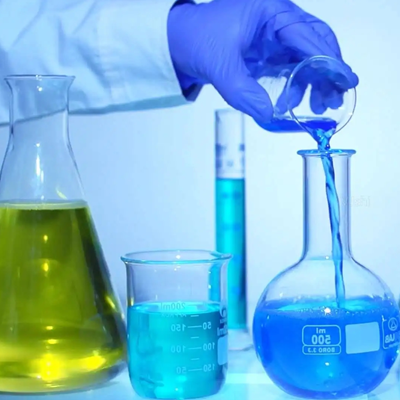MPP阻燃剂|CAS 218768-84-4
MPP flame retardant, also known as melamine polyphosphate, CAS: 218768-84-4, features good dispersibility, high decomposition temperature, high whiteness, good electrical properties, low smoke density, low toxicity, and low corrosivity. It is suitable for glass fiber reinforced PA6/66. MPP flame retardant, when compounded, can be used in plastics such as PP, PE, TPE, PET, PA6, PA66, and PBT, meeting the V-0 rating.

I. Basic Data
English Name: Melamine polyphosphate; MPP flame retardant; melamine polyphosphate; melamine pyrophosphate
Molecular Formula: (C3H7N6O3P)n
CAS: 218768-84-4
N: 13±1%
P: 43±1
Average Particle Size (μm): 5±1
Density (g/cm3): 1.8±0.1
Bulk Density (g/cm3): 0.4~0.6
5% Decomposition Temperature >320℃
Moisture Content <0.5%
pH: 5-7
Water Solubility (g/100ml) (25℃) <0.1
Appearance: White powder
II. Product Features
1. Can be used alone as a flame retardant or as an auxiliary flame retardant additive. Widely used in flame retardancy of various thermoplastics, polyolefins, synthetic rubber, engineering resins, fire-retardant coatings, paper, and fireproof boards. Suitable for plastics with processing temperatures below 300℃, such as: polyolefins, wires and cables, epoxy resins, glass fiber reinforced nylon, polyurethane (PU), unsaturated resins, fire-retardant coatings, etc.
2. MPP flame retardant has good thermal stability, with a decomposition temperature ≥350℃, especially suitable for flame retardancy of glass fiber reinforced PA66.
3. Good processability, requiring no special screw assembly or special specifications of glass fiber.
4. Good dispersibility, enhancing the mechanical properties of processed products, reducing product moisture absorption, and facilitating storage.
5. Good electrical properties, suitable for use in electrical appliances and products. Also possesses excellent resistance to exudation and heat aging.
6. Flame-retardant products exhibit low smoke density, halogen-free and low toxicity, and low corrosivity during combustion, meeting European green environmental protection requirements.
7. In fire-retardant coatings, it can act as both a catalyst and a foaming agent, with performance slightly superior to ordinary ammonium polyphosphate (APP).
III. Flame-retardant Mechanism
1. During the flame-retardant process, inert gases such as NH3 are produced, which greatly dilute the concentration of combustible gases, achieving a gas-phase flame-retardant effect. The nitrogen-containing portion decomposes rapidly, absorbing a large amount of heat, cooling the surface of the insulation layer, reducing further heat transfer, and the water, ammonia, and carbon dioxide produced during decomposition contribute to good smoke suppression.
2. MPP flame retardant, containing both phosphorus and nitrogen, exhibits a synergistic flame-retardant effect. During polymer combustion, the decomposed phosphoric acid covers the surface of the insulation layer, providing insulation. The phosphoric acid also forms a char layer with the polymer, reducing oxygen supply. This covering layer isolates heat, combustible gases, and oxygen, preventing further combustion.
IV. Dosage Examples
PP, PE: MPP flame retardant can be compounded with piperazine pyrophosphate and added at 20-30% to achieve a UL94V0 flame retardant rating.
V. Precautions for Use
1. Note on the use of colorants: Additives or colorants containing Br or Cl (such as phthalocyanine green) may cause melamine polyphosphate (MPP) flame retardant to become ineffective. The flame retardant effect will decrease when the amount of carbon black added exceeds 0.5% (or the amount of black masterbatch added exceeds 1%).
2. Note on the use of fillers: Some inorganic fillers can affect the flame retardant effect. Calcium carbonate will severely affect the flame retardant effect. When adding talc or barium sulfate, the amount of flame retardant added needs to be increased appropriately. Fillers and reinforcing materials with less impact include wollastonite, silica fume, glass fiber powder, and glass fiber.
VI. Packaging and Storage
20-25kg/bag; transport as general chemicals, store in a dry, cool place, avoid direct sunlight.
MPP flame retardant can be used alone or in combination with other flame retardants. It is suitable for materials including nylon PA6/PA66, PS, EVA, and PU. It has very low solubility, a high decomposition temperature, and better water resistance than ammonium polyphosphate. It can be synergistically combined with various inorganic flame retardants such as piperazine pyrophosphate; the formulation varies depending on the polymer material and flame retardancy requirements. It is suitable for flame retardant applications such as glass fiber and fillers. Its high nitrogen content allows it to form a high yield of flame-retardant or non-combustible gases when heated, while its high phosphorus content causes it to undergo a high degree of dehydration and carbonization reaction with the matrix material, forming a stable, insulating coke layer. It undergoes endothermic decomposition at high temperatures, effectively absorbing heat and cooling the heat source.
 MPP阻燃剂|CAS 218768-84-4
MPP阻燃剂|CAS 218768-84-4
 Does sodium hypophosphite cont
Does sodium hypophosphite cont
 DOS,DOA,DOZ three dibasic acid
DOS,DOA,DOZ three dibasic acid
 Phosphorous acid Application
Phosphorous acid Application


